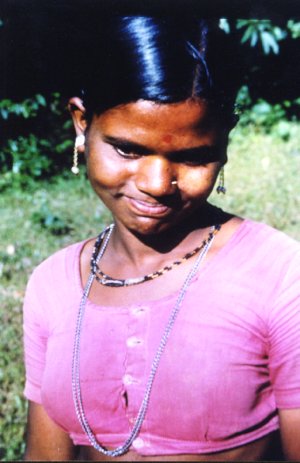The Kudubi Community
by K.
L. Kamat
Written May 27, 2000
First Online: October 26, 2003
Page Last Updated: February 17, 2024
Among the Hindus of Goa who were humiliated and persecuted, first by the Muslims in 1312 A.D., then by Portuguese in 1510 A.D. were the community of Kudubis (a.k.a. Kulubis and Kunubis). The harshness compelled them to migrate to neighboring North and South Kanara districts of Karnataka state (today known as Uttara Kannada, Dakshina Kannada and Udupi districts). The Kudubis joined migrants like Saraswat brahmins, Sonars, Vanis, Devalis, and Sutars and continued to practice their language, preserving their culture and traditions.
The Kudubis, followers of Mallikarjuna of Cannecone (in present day Goa), settled down in deep forest areas of Supa, Yellapur and Halliyal talukas of North Kanara district and Basrur, Barkur, Brhmavara, Mulki, Ullal area of South Kannara. They took to agriculture of farm lands of local people. They grew paddy as major crop, and different types vegetable as cash crops.
© K. L. Kamat

The Kudubis are a warrior community, and wild animal hunting is one of the community exercises that has persisted through the centuries. All male members of a village get together and go in for wild boar trapping which is always followed by a hearty dinner. At dusk they spread out homemade cotton net around the bushes and catch rabbits. They fish in the village river and ponds. Rice is their staple food and supplemented with vegetable, fish and meat. They raise cattle but they hardly use dairy products in their diet except in tea. They sell milk and milk products in order to earn cash. Among themselves they usually exchange their produce. On a weekly market day, they buy salt, oil, condiments and sweets.
The Kudubis live in a joint family system and hence more than ten members are common in a household. The senior-most member is the master of the house and all the members rigidly abide by this wishes. Men are considered superior to women folks and hence they enjoy more liberty. They smoke, chew pan and at times get drunk, however women are supposed to lead a very pious life and should be most obedient to their husbands. The women are expelled from the village if found involved in extra-marital relations. However, for the same men are penalized very lightly. They have a tribal wise man ( known as "Budvantha") who sits in judgment on all such disputes. They don't seek lawyers' and court's interventions in their lives. Similarly, most of the community members do not use postal and banking services!
© K. L. Kamat

The Gumatepak Dance
Like the local Hallaki farmers the harvest (suggi) festival is a great occasion to the Kudubis. It is celebrated for five days. They wear elaborate turbans, decorated with flowers, feathers or tender coconut palm leaves. They sport bright colored shirts and dhotis on which a long shawl is wrapped. An earthen drum "Gumate" is hung from their left shoulder. This drum has both ends open, the broad end is covered with a skin whereas narrow end is left open. They play on these drums and sing Konkani songs in praise of different gods, and dance accordingly. After a while they lay off their drums and pick up sticks (kolu) and continue dancing while striking their sticks. They also perform peacock-dance, and other folk-dances. The women do not participate in any of these dances.
![]()
List of Pictures
- A Kudubi Farmer
- Kudubi Folk Dancer
- Kunubi Dancer
- Laborer Siblings on way to Forest
- The Gumatepak Dance
![]()
